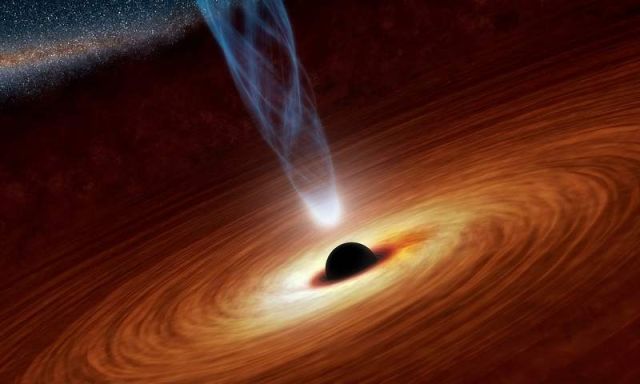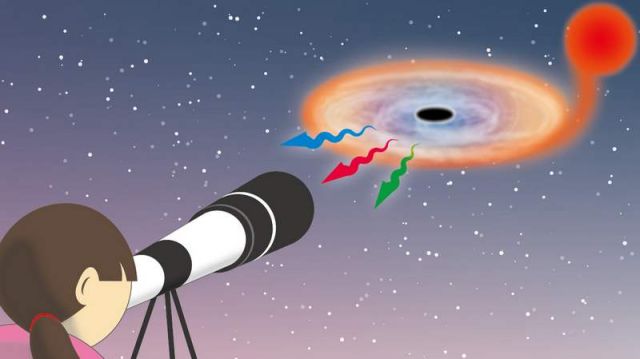Astronomers have discovered that black holes can be observed through a simple amateur telescope, from the violent bursts of light released when material from surrounding space falls into them.
Japanese researchers detected for the first time light waves observing V404 Cygni, an active black hole in the constellation of Cygnus, located about 7,800 light-years from Earth, that can even be studied by a small telescope.
Above: A NASA illustration of a supermassive black hole. Image credit NASA
Anything falling into black holes cannot escape, not even light.
Before this observation, outbursts from black holes had only been seen, as flashes of x-rays and gamma-rays, using special telescopes.
Mariko Kimura of Kyoto University and others report at the journal Nature, that the flashes of light lasted from several minutes to a few hours.
“We now know that we can make observations based on optical rays – visible light, in other words – and that black holes can be observed without high-spec x-ray or gamma-ray telescopes.
These findings suggest that we can study physical phenomena that occur in the vicinity of the black hole using moderate optical telescopes without high-spec X-ray or gamma-ray telescopes.”
A stargazer with a moderately sized telescope could see visible light from near the black hole V404 Cygni. Image credit: Eiri Ono/Kyoto University
Kimura and her team detailed their findings in the journal Nature.
via space.com







Leave A Comment